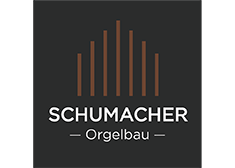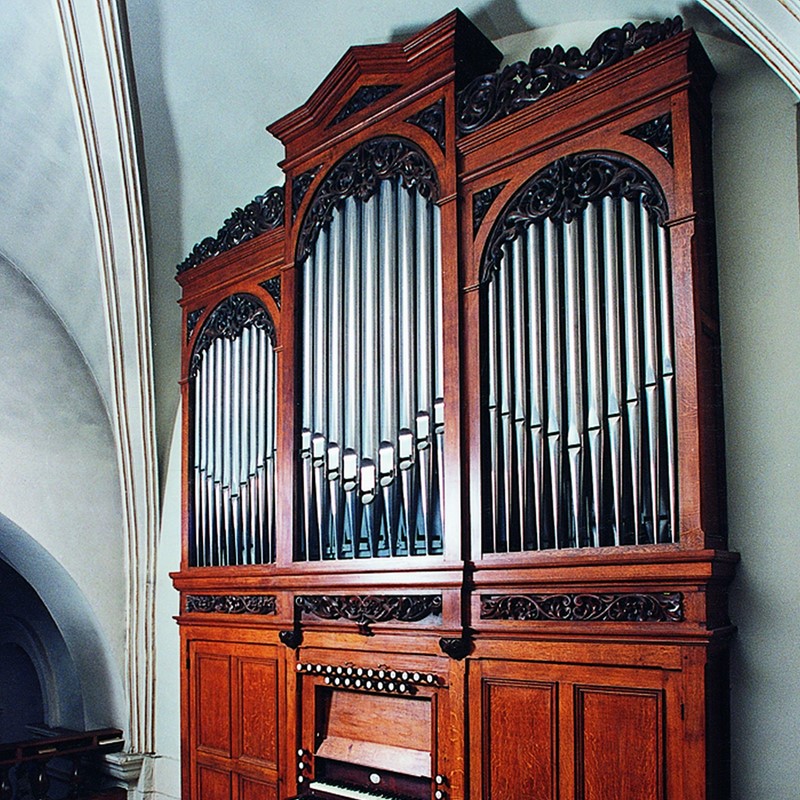Hombourg (Plombières, B) | Saint Brice
This organ was built in 1879 in the renowned “Pereboom and Leÿser” organ workshop. These two associated organ builders lived in Maastricht from 1850 -1895 and completed approximately 120 instruments.
The instrument in Hombourg has a number of particular features. The organ case consists of only one front of oak, fixed to the wall arch, and a back of pine. The specification of the Great Organ belongs to the Belgian classical tradition of Liège , modified however by the absence of the individual high pitched mutations and mixtures as in earlier periods but with the addition of some romantic stops at 8' pitch. The open wooden Flute 8' gives the foundation stops exceptional richness.
There are only 8' and 4' stops in the second manual which since there is no swell box, serves as accompaniment division. For a small country church, it can be said that the composition of the pedal is very rich with its three stops two of which are of full 16' length.
The project aimed at restoring the original elements of the organ but the front pipes had to be replaced because of the lack of rigidity of the original laminated metal pipes which were too thin.
Stop list
Grand-Orgue
C – g '''
Bourdon 16'
Montre 8'
Flûte traversière 8' c°
Bourdon 8'
Viole de Gambe 8'
Prestant 4'
Flûte 4'
Doublette 2'
Fourniture III
Cornet V
Trompette 8' basse/haute
Clairon 4'
Positif / Grand-Orgue
Positif
C – g '''
Salicional 8'
Bourdon 8'
Mélophone 8' c°
Prestant 4'
Dolce 4'
Flûte 4'
Basson 8' bas / Hautbois 8' haut
Tremblant
Pédale
C – d '
Soubasse 16'
Octave 8'
Bombarde 16'
Grand-Orgue / Pédale
Positif / Pédale

